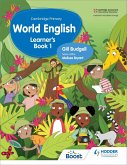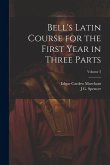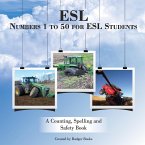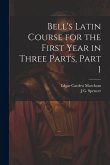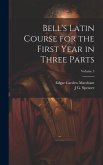How to Think in English is a light, personalized guide to help ESL / EFL teachers worldwide. It outlines the framework for the 3 vital steps you need to teach English to speakers of other languages (TESOL). It covers the obvious about how English functions at its core level by mapping out the precise order your ESL/EFL learners need to acquire in order to think as a native speaker would think. Although it is aimed as a guide for English teachers, it is written in a simple entertaining style with lots of examples, anecdotes, stories and suggestions for helping students engage their right brain to acquire this core concept. It is a fun read for anyone interested in the linguistic aspects of that infamous language: English (the lingua franca). If you are a native speaker you learned how to think in English by the time you were two to four years old, as described by Noam Chomsky, through your "Language Acquisition Device" (LAD) which he says is hardwired into your brain, despite the "poverty of stimulus". In other words, you were able to do this without being taught or without sufficient examples. But second language learners usually have an entirely different way of thinking because they come from different language groups that often have different word orders than English. And when they have the same word order they have more flexibility to change the order than English does. For this reason, you need to help your students acquire the specific order for thinking in English from the very beginning. This book offers suggestions for accomplishing this task. It contains two specially designed activities that support the core concept as well as some amusing metaphors (The Three Brother's Law and The Accordion Principle) that will help your students remember the concept. Without acquiring these core concepts your students will not be firmly grounded in the language. They may learn a lot of grammar and new vocabulary, but without grounding, when they reach higher levels and must think and perform beyond their capacity, they may be speaking and writing in English, but thinking in their own language. This can produce a distorted version of what they really mean to say. For this reason, re-visiting and reinforcing this concept is important at all levels.This book is about the heartbeat and rhythm of the language, something you may have stopped hearing a long time ago but which your students need to learn so they can march with the beat of the English language in its succinct personal way of thinking and expressing itself. Students who have a solid foundation have a good start in mastering native-like proficiency and can progress to advanced levels while staying in rhythm with the precise order of English. Although this concept is often mentioned to learners it is not practiced and emphasized enough to become automatic for them. There are many activities and exercises which are vital for English learners in their journey to acquire the language, but the ones in this book are designed specifically to reinforce the three vital steps for thinking in English, because these steps underlie any other steps they may subsequently learn. This book will point out what you know, but didn't know that you knew.
Hinweis: Dieser Artikel kann nur an eine deutsche Lieferadresse ausgeliefert werden.
Hinweis: Dieser Artikel kann nur an eine deutsche Lieferadresse ausgeliefert werden.


